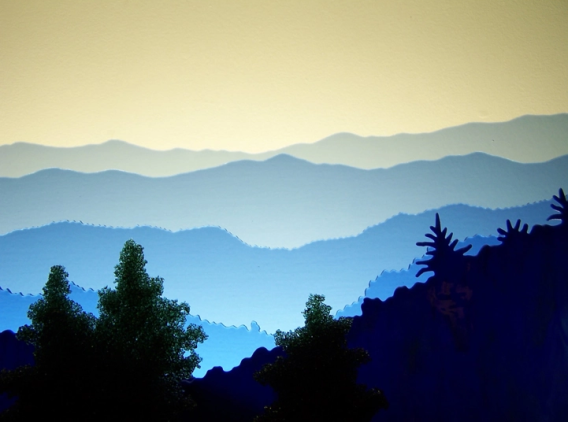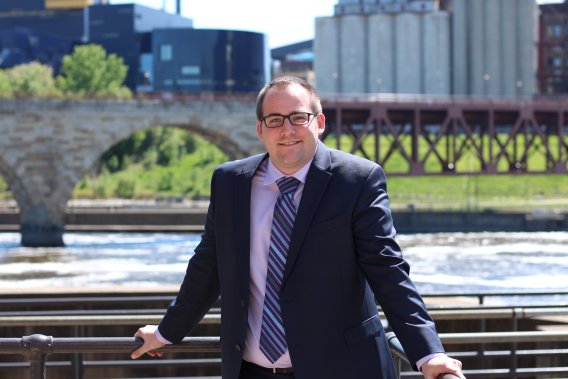Landscapes of Glass with Douglas J. Jerolmack & Silberman Fellowship Award Ceremony
Join us on Tuesday, November 2nd for a seminar with Dr. Douglas Jerolmack and a celebration of this year's Edward Silberman Fellowship recipient, Brandon Sloan.
Douglas J. Jerolmack, Professor, Department of Earth and Environmental Science, University of Pennsylvania

Abstract: If cooled sufficiently quickly, the disorder of a liquid can be "quenched" or locked in place; the resulting amorphous solid is glass. Although it appears to be solid on human timescales, glass continues to creep due to thermal vibrations at the molecular scale. Consider now a pile of sand; it too is a disordered system, but the grains are too massive for such thermal effects to be relevant. Yet, soils in nature relentlessly creep, on hillslopes below the angle of repose. The unchallenged dogma is that this creep is driven by churning of soil by (bio)physical disturbances, and diffusion models based on this premise underpin virtually all landscape evolution models (LEMs). River-bed sediments also creep, at flows below the threshold of motion, though this has received far less attention. In this talk I focus on recent work from my group and others that examines the origins of granular creep in hillslope and river systems, and the consequences of these findings for landscape dynamics. Our observations, arising from first-of-their-kind experiments and simulations, reveal surprises for both geologists and physicists. First, gravity-driven granular creep occurs with minimal disturbance, with rates and styles comparable to field observations. Second, this creep shares deep similarities with the behavior of glass, suggesting that mechanical disturbance in granular systems plays a role akin to thermal fluctuations in molecular systems. Third, fluid-driven creep in bed-load systems has similar behavior to gravity-driven hillslope creep. In both cases this creep acts to "harden" the bed, by compaction and the creation of structures that resist motion. Thus, sediment beds maintain a memory of their history of forcing, that dictates the threshold for landsliding (hillslopes) or entrainment (rivers). I wish that I could conclude with some new model or models that would incorporate these insights and improve LEMs. But we're just not there yet. We're still in the process of deconstructing old models with challenging observations of what grains do. My hopes, then, are the following: introduce new concepts and frameworks from glass physics that I find helpful for understanding landscapes; engage broader interest (from you!) in HOW landscapes accomplish their deformation; explain qualitative phenomenology of natural landscapes; and get insights from you on "translating" these findings to systems you may care about (or, at least care about more than a pile of sand).
About the speaker: Douglas Jerolmack holds a BS in Environmental Engineering from Drexel University and a PhD in geophysics from MIT. He was a postdoc at SAFL in 2006-2007, where he had the most fun in his academic life. Dr. Jerolmack is currently faculty in Earth and Environmental Science, and Mechanical Engineering and Applied Mechanics, at the University of Pennsylvania. He works on problems at the interface of geophysics and soft-matter physics, and that are solid, fluid and granular. His lab mostly does experiments, but also a little field work and occasionally some theory.
2021-2022 Edward Silberman Fellowship Recipient Brandon Sloan, Ph.D. candidate in Civil, Environmental and Geo- Engineering, advised by Xue Feng
Brandon's work: Plants respond to and alter the climate by absorbing (eating) energy and CO2 while transpiring (drinking) water from the soil. However, many current climate models over-simplify a plant’s diet—especially when they are dehydrated—by ignoring the physics of how plants eat and drink. Brandon’s research explores how said physics (i.e., plant hydraulic theory) improves predictions of plant drinking habits necessary for accurate climate projection while advancing our understanding of ecosystem resilience under future water stress.

About: Brandon Sloan is a Ph.D. candidate in Civil, Environmental and Geo- Engineering advised by Xue Feng. Born in Chippewa Falls, WI, Brandon has toured the Midwest in his academic/professional career, receiving a B.S. degree in Environmental Engineering from the University of Wisconsin – Platteville, and an M.Sc. in Water Resources from IIHR-Hydroscience and Engineering at the University of Iowa. After a three-year hiatus, working as a Water Resources Engineer in the Twin Cities, Brandon returned to academia, beginning his Ph.D. at SAFL in Fall 2016.
History of the Fellowship: The family of Professor Edward Silberman established this fellowship fund in honor of their father, to endow a lasting legacy in his name to provide fellowships to students at the University of Minnesota’s St. Anthony Falls Laboratory. Silberman earned his B.S. and M.S. from the Department of CivilEngineering in the mid-1930s. He started his career at SAFL in 1946 and took over the directorship of SAFL in 1963 after the death of founding director Lorenz Straub. Over the next decade, Silberman worked tirelessly to build the foundation of excellence from which SAFL’s successes of today are founded. The Silberman family made this gift to honor the lasting contributions of their father to SAFL and in celebration of his 90th birthday.
